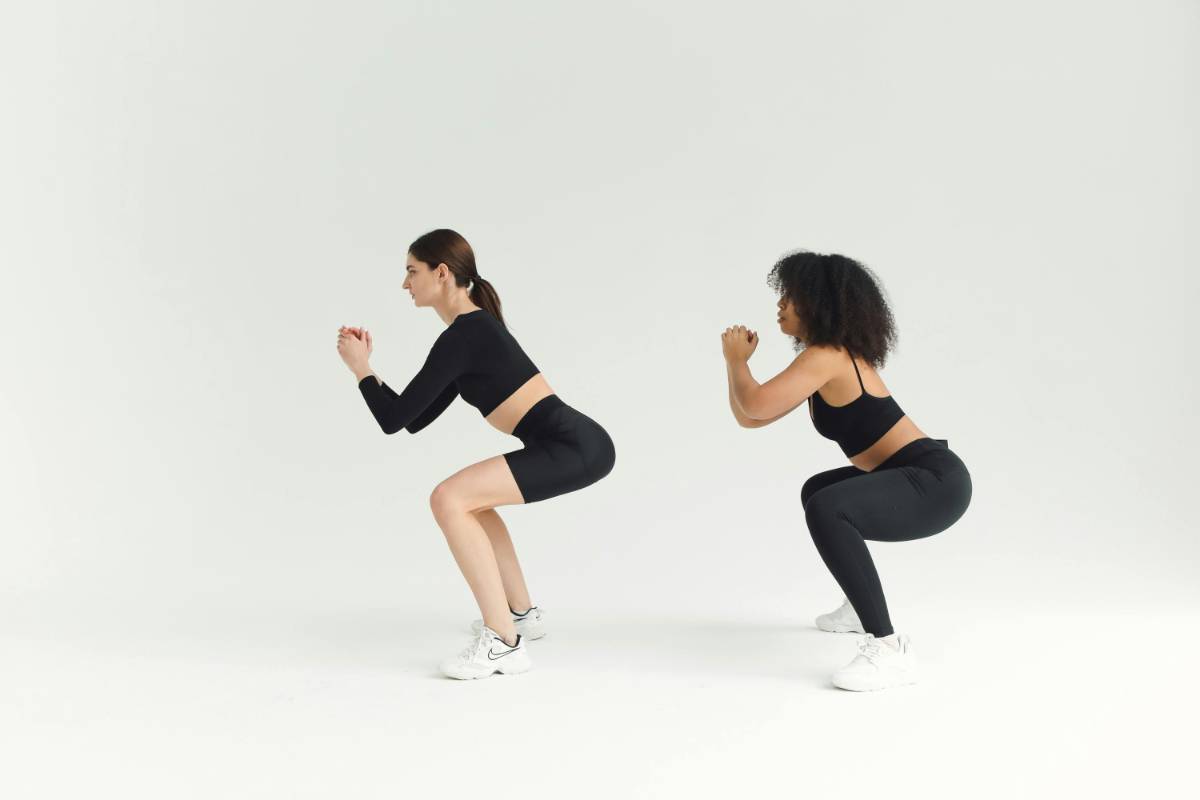The Ultimate Full-Body Workout Routine for Beginners

4 min read
|08 Dec 2025Starting a workout routine can be both exciting and overwhelming, especially if you’re new to fitness. A full-body workout routine is an excellent way for beginners to build strength, improve endurance, and establish a solid foundation for more advanced exercises. Here’s a comprehensive guide to a full-body workout routine designed specifically for beginners.
Why a Full-Body Workout?
A full-body workout targets all major muscle groups in a single session. This approach is beneficial for beginners because it helps to build overall strength and endurance, promotes balanced muscle development, and allows for more frequent training sessions. Additionally, full-body workouts are time-efficient and can be adjusted to fit various fitness levels.
Warm-Up
Warming up before your workout is essential for preparing your body and reducing the risk of injury. Spend 5-10 minutes performing light cardio exercises such as brisk walking, jogging, or jumping jacks. Follow this with dynamic stretches like leg swings and arm circles to increase blood flow and flexibility.
The Workout Routine
Here’s a sample full-body workout routine for beginners. Perform each exercise with proper form and control, and aim to complete 2-3 sets of 10-12 repetitions per exercise. Rest for 30-60 seconds between sets.
1. Squats
Squats are a great exercise for targeting the legs, glutes, and core. Stand with your feet shoulder-width apart and lower your body by bending your knees and hips, keeping your back straight. Return to the starting position and repeat.
2. Push-Ups
Push-ups work the chest, shoulders, and triceps. Start in a plank position with your hands placed slightly wider than shoulder-width apart. Lower your body until your chest nearly touches the ground, then push back up to the starting position. Modify by performing push-ups on your knees if needed.
3. Bent-Over Rows
Bent-over rows target the back, biceps, and core. Hold a dumbbell in each hand with your palms facing your body. Bend at the waist with a slight bend in your knees, keeping your back straight. Pull the dumbbells toward your hips, squeezing your shoulder blades together, then lower them back down.
4. Lunges
Lunges work the legs and glutes. Stand with your feet hip-width apart and step forward with one foot, lowering your hips until both knees are bent at a 90-degree angle. Push off the front foot to return to the starting position and repeat with the other leg.
5. Plank
The plank is an excellent core exercise that also engages the shoulders and back. Start in a forearm plank position with your elbows directly under your shoulders and your body in a straight line. Hold this position for 20-30 seconds, focusing on keeping your core tight.
6. Dumbbell Shoulder Press
The shoulder press targets the shoulders and triceps. Sit or stand with a dumbbell in each hand at shoulder height. Press the dumbbells overhead until your arms are fully extended, then lower them back to shoulder height.
Cool Down
Cooling down after your workout helps to reduce muscle soreness and aid in recovery. Spend 5-10 minutes performing light cardio and static stretches, focusing on the muscles you worked during your session. Stretching your legs, arms, and back can help improve flexibility and prevent stiffness.
Tips for Beginners
Here are some additional tips to help you get the most out of your full-body workout routine:
1. Focus on Form: Proper form is crucial for preventing injuries and ensuring that you’re targeting the right muscles. Take the time to learn the correct technique for each exercise, and consider working with a personal trainer if you’re unsure.
2. Start Slow: Begin with lighter weights and fewer sets if you’re new to strength training. Gradually increase the weight and intensity as you become more comfortable and confident.
3. Stay Consistent: Consistency is key to achieving fitness goals. Aim to complete your full-body workout 2-3 times per week, allowing at least one rest day between sessions.
4. Listen to Your Body: Pay attention to how your body feels during and after workouts. If you experience pain or discomfort, take a break and modify the exercise if needed. It’s important to listen to your body and avoid overtraining.
5. Hydrate and Fuel Up: Stay hydrated before, during, and after your workout. Eating a balanced meal or snack with protein and carbohydrates can help fuel your workout and aid in recovery.
In conclusion, a full-body workout routine is an excellent way for beginners to build strength, improve fitness, and establish a solid foundation for future training. By incorporating these exercises into your routine and following the provided tips, you can effectively work toward your fitness goals and enjoy the benefits of a well-rounded workout program.
MORE ARTICLES

5 min read | 16 Dec 2025
Effective Weight Loss Workouts and Healthy Eating Practices for Busy Schedules
Maintaining a healthy lifestyle while juggling a busy schedule can be challenging, but it’s possible with the right strategies. Effective weight loss workouts and healthy eating practices are essential for achieving and sustaining your fitness goals. Here’s a guide to help you stay on track with your weight loss journey even with a hectic lifestyle.

2 min read | 15 Dec 2025
How to Choose the Right Skincare Routine for Your Fitness Lifestyle
Choosing the right skincare routine to complement your fitness lifestyle is essential for maintaining healthy, glowing skin. Regular exercise can benefit your skin, but it also requires a skincare routine that addresses the unique needs that come with an active lifestyle. Here’s a guide to help you select the best skincare routine for your fitness-oriented life.

4 min read | 14 Dec 2025
The Connection Between Mental Health, Personal Care, and Weight Loss
The connection between mental health, personal care, and weight loss is complex and multifaceted. Understanding how these elements interact can help you create a more holistic approach to achieving and maintaining a healthy weight. Here’s a look at how mental health and personal care impact weight loss and ways to address these connections.

3 min read | 13 Dec 2025
Top Weight Loss Tips for Busy Individuals: Balancing Diet and Exercise
Balancing diet and exercise can be challenging, especially for busy individuals with hectic schedules. However, achieving weight loss goals while managing a busy lifestyle is possible with the right strategies. Here are some top weight loss tips for busy individuals to help you stay on track with both diet and exercise.

2 min read | 12 Dec 2025
How to Design a Workout Routine That Aligns with Your Dietary Goals
Designing a workout routine that aligns with your dietary goals is essential for achieving optimal results and maintaining a balanced lifestyle. By integrating your nutrition with your exercise regimen, you can enhance performance, support recovery, and reach your fitness goals more effectively. Here’s a guide to help you create a workout routine that complements your dietary objectives.

3 min read | 11 Dec 2025
Healthy Eating Tips for Enhancing Your Workout Recovery
Proper nutrition is crucial for optimizing workout recovery and ensuring that your body heals and rebuilds effectively after exercise. Consuming the right nutrients can help reduce muscle soreness, replenish energy stores, and promote overall recovery. Here are some healthy eating tips to enhance your workout recovery and support your fitness goals.
RECENT POSTS
1
How to Design a Workout Routine That Aligns with Your Dietary Goals
2 min read | 12 Dec 20252
Healthy Eating Tips for Enhancing Your Workout Recovery
3 min read | 11 Dec 20253
Essential Personal Care Products for Athletes and Fitness Enthusiasts
4 min read | 10 Dec 20254
How Personal Care Routines Can Impact Your Weight Loss Journey
4 min read | 09 Dec 20255
Effective Strategies for Weight Loss Through Diet and Exercise
3 min read | 17 Dec 20256
Creating a Holistic Approach: Combining Nutrition, Exercise, and Personal Care
4 min read | 16 Dec 2025MORE POSTS

The Role of Natural Sweeteners in a Healthy Diet
3 min read | 10 Nov 2025
Tips for Reducing Sugar in Your Diet
5 min read | 09 Nov 2025
Sugar Substitutes: What’s Safe and What’s Not?
3 min read | 08 Nov 2025
How to Read Nutrition Labels for Added Sugars
5 min read | 07 Nov 2025
The Health Risks of Excess Sugar Consumption
4 min read | 06 Nov 2025
